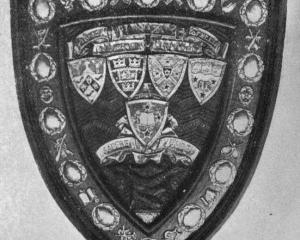The Dunedin visitor remarked that he had been paying visits to the goldfields for several years past, and that he also had never seen the country looking so well. In some of the fields, the growth of clover was such that it was hardly possible to see the grazing sheep, and this fact was all the more noticeable seeing that in previous years a lot of the land which is now covered with grass and clover was practically bare of pasture. In several of the fields round about the old Kawarau station were seen fields of clover which could not fail to arrest the eye, while in the vicinity of Ophir, Lauder, and the Waihemo Valley from the Dunedin side of Pigroot, the growth of grass and crops was very prolific.
The sheep and cattle were looking in splendid condition, continued our informant, and whatever complaints farmers living nearer the sea coast may have as regards the past wet season, they were certainly not voiced by the goldfields agriculturists, the heavy winter and spring rains evidently being just what the dry, sandy land of the interior requires to make it give forth of its best.
• Some sportsmen, spending the week-end with rod and gun on the Puerua stream at Lochindorb, espied a shag enjoying a dinner of eel (says the Clutha Leader), there being about two inches of the tail end of the fish protruding out of the bird's bill. On the bird being shot and the eel drawn out it was found that the feathered diner had ''bitten off more than he could chew'' so to speak, for the fish was fully 2ft long, and the head was undergoing the process of digestion. A photograph was taken, and it clearly proved the devoured to be longer than the devourer. Later on the party gaffed a large eel, about a 14-pounder, and on it being opened it was found that he had been dining well, for four trout weighing between half a pound to three-quarters of a pound, as well as a lobster, were brought to light. The ''fish'' were brought back to Clutha to convince sceptics of the truth of the story.
• Some interesting information with regard to various experiments being conducted in the South Island by the Fields Division of the Agricultural Department, was supplied to a representative of the Christchurch Press on Saturday by Mr A. Macpherson, Fields Instructor for the South Island. Hitherto, he said, only tree lupins have been grown, but now the department has sown in the sand at Te Oranga Home, three varieties of lupins - yellow, blue, and white. It is proposed, on securing the seed from these, to carry out more extensive experiments.
There are a very large number of places and farms where experiments are being carried out with wheat, oats, lucerne, maize, millet, mangolds, swede turnip, yellow and white fleshed turnip, kohl rabi, chou moellier, buda kale, one thousand headed kale, marrow stem kale, rape, peas, potatoes, parsnips, carrots, pumpkins, marrows, squashes, silver beet, cow peas, buck wheat, Kaffir corn, soya bean, Tongan bean, and helianti. Experiments are also being carried out on an extensive scale with 54 different kinds of grasses, clovers, and other forage plants. There are 218 plots in different school grounds alone: There are 17 varieties of wheat under test at eight farms, and 15 varieties of oats on 11 farms.
Lucerne experiments are being carried out on 150 farms.
- ODT, 11.12.1912.
• COPIES OF PICTURE AVAILABLE FROM ODT FRONT OFFICE, LOWER STUART ST, OR WWW.OTAGOIMAGES.CO.NZ












